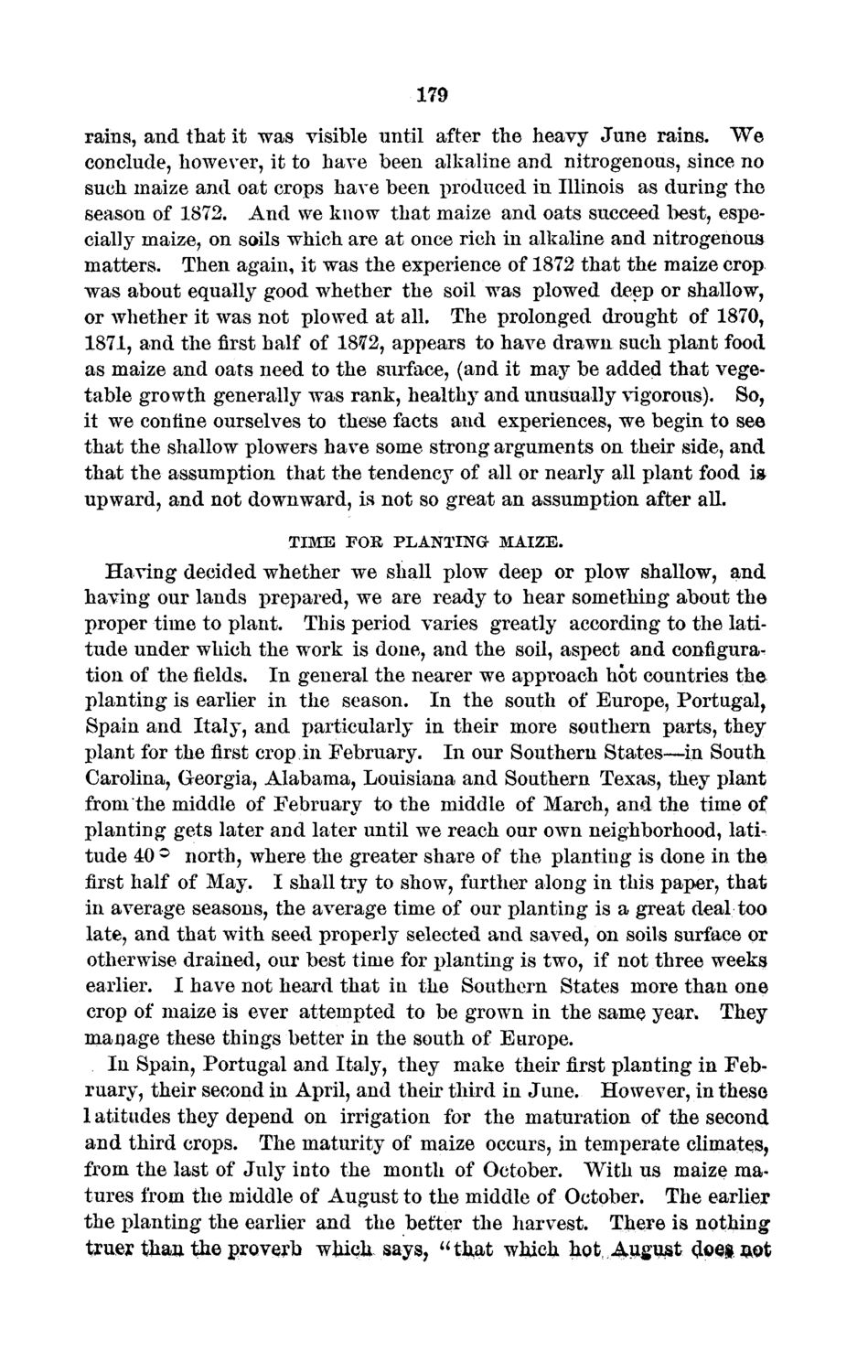| |
| |
Caption: Board of Trustees Minutes - 1872
This is a reduced-resolution page image for fast online browsing.

EXTRACTED TEXT FROM PAGE:
179 rains, and that it was visible until after the heavy June rains. We conclude, however, it to have been alkaline and nitrogenous, since no such maize and oat crops have been produced in Illinois as during the season of 1872. And we know that maize and oats succeed best, especially maize, on soils which are at once rich in alkaline and nitrogenous matters. Then again, it was the experience of 1872 that the maize crop was about equally good whether the soil was plowed deep or shallow, or whether it was not plowed at all. The prolonged drought of 1870, 1871, and the first half of 1872, appears to have drawn such plant food as maize and oats need to the surface, (and it may be added that vegetable growth generally was rank, healthy and unusually vigorous). So, it we confine ourselves to these facts and experiences, we begin to see that the shallow plowers have some strong arguments on their side, and that the assumption that the tendency of all or nearly all plant food w upward, and not downward, is not so great an assumption after all. TIME FOR PLANTING MAIZE. Having decided whether we shall plow deep or plow shallow, and having our lands prepared, we are ready to hear something about the proper time to plant. This period varies greatly according to the latitude under which the work is done, and the soil, aspect and configuration of the fields. In general the nearer we approach hot countries the planting is earlier in the season. In the south of Europe, Portugal, Spain and Italy, and particularly in their more southern parts, they plant for the first crop in February. In our Southern States—in South Carolina, Georgia, Alabama, Louisiana and Southern Texas, they plant from the middle of February to the middle of March, and the time of planting gets later and later until we reach our own neighborhood, latitude 40 ° north, where the greater share of the planting is done in the first half of May. I shall try to show, further along in this paper, that in average seasons, the average time of our planting is a great deal too late, and that with seed properly selected and saved, on soils surface or otherwise drained, our best time for planting is two, if not three weeks earlier. I have not heard that in the Southern States more than one crop of maize is ever attempted to be grown in the same year. They manage these things better in the south of Europe. In Spain, Portugal and Italy, they make their first planting in February, their second in April, and their third in June. However, in these 1 atitudes they depend on irrigation for the maturation of the second and third crops. The maturity of maize occurs, in temperate climates, from the last of July into the month of October. With us maize matures from the middle of August to the middle of October. The earlier the planting the earlier and the better the harvest. There is nothing truer than the proveyb which says, " t h a t which hot, August <Joe|&ot
| |